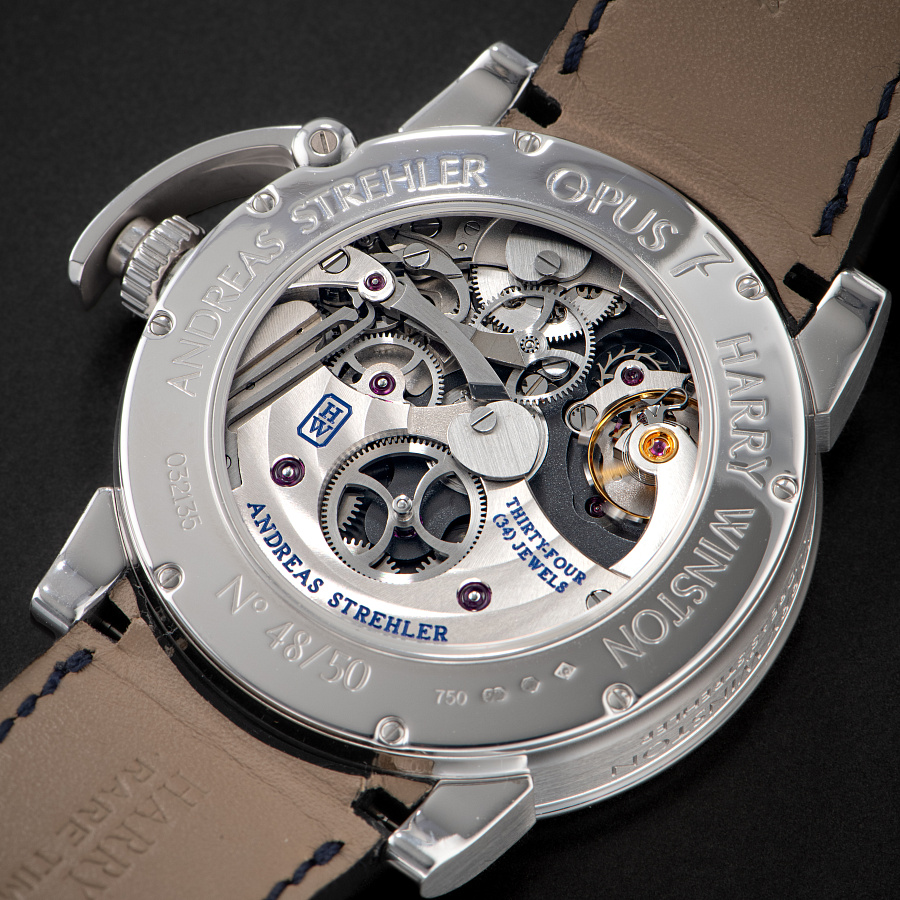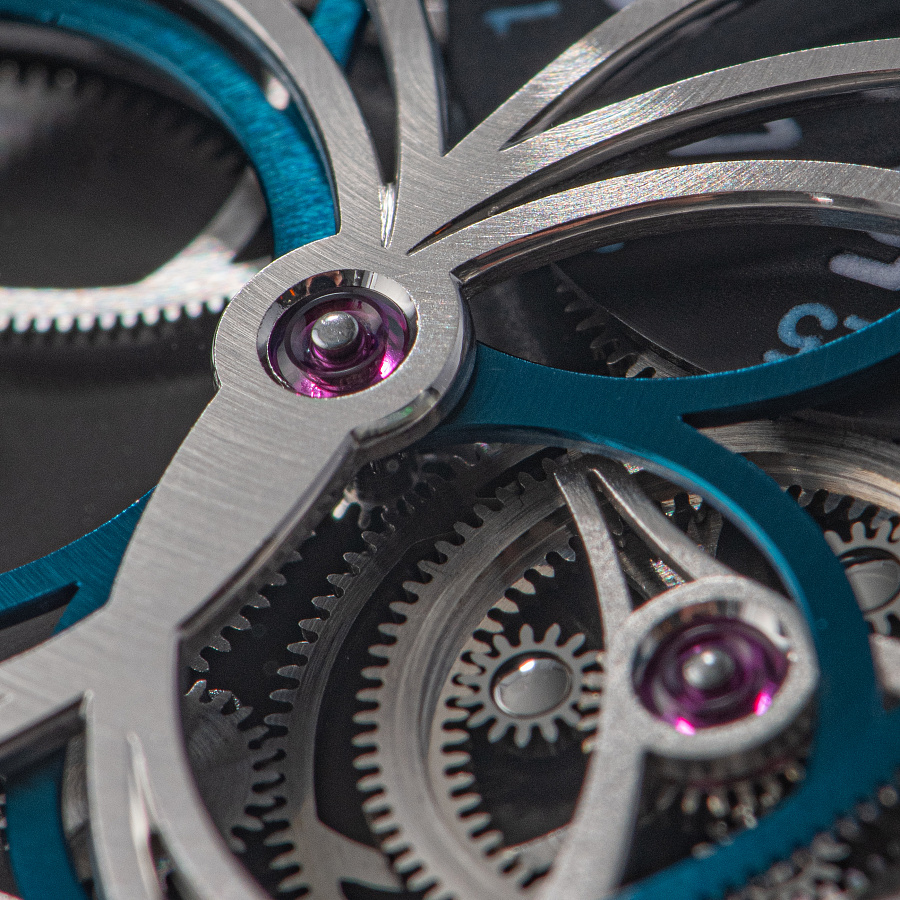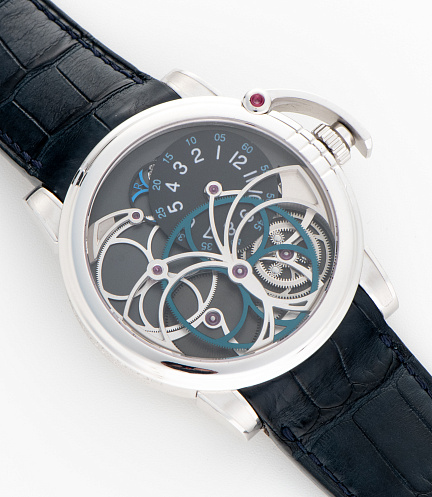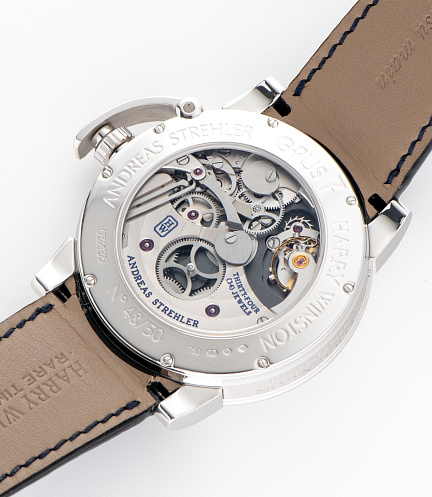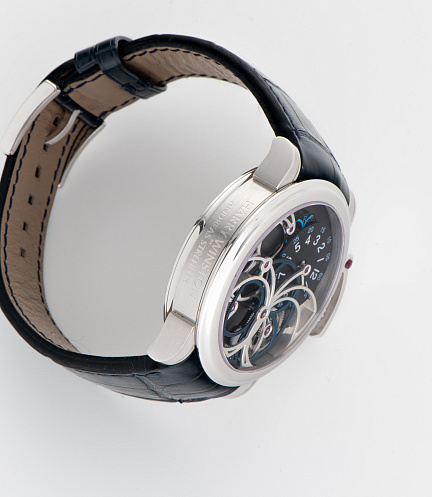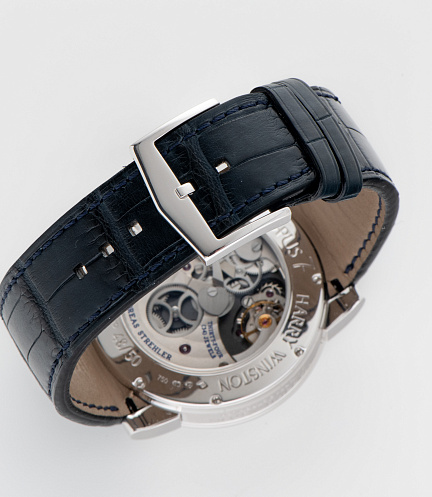Harry Winston

Don't hesitate to ask for any additional information, Artemy is ready to assist and guide you in your decision
DETAILS
The Opus 7 project was launched after Maximilian Büsser, who had launched the Opus project in 2001, left Harry Winston. What made this project so attractive and communicatively successful was the involvement of independent watchmakers who offered their creative concepts for joint realization with Harry Winston. This is particularly true of Opus 7, which was conceived by Andreas Strehler, a renowned independent watchmaker behind such cool developments and inventions as the Chronoscope for Chronoswiss (2003), the base calibers, the Perpetual Moon with precision moonphase and the Perpetual 1 flash perpetual calendar for H. Moser & Cie (2005), the traditional chronograph movement of the Le Chronographe watch for Maurice Lacroix (2006) and his own version of the constant-force escapement (2013). The Opus 7 is one of the best-known watches created by Andreas Strehler.
REASONS TO BUY
This Harry Winston Opus 7 by Andreas Strehler first catches the eye with its fantastic appearance with two very large wheels of the main gear and the main bridge, which is skeletonized in the shape of a butterfly. The function of the switchable display of hours, minutes and power reserve by means of a single disc with numerals makes handling the watch playful – reading the time becomes an exciting interaction with a watch, while behind it lies a very sophisticated and serious mechanism. The Opus 7 is considered one of the most interesting chapters of the Harry Winston Opus project. The reason for this is the unusual combination of a decorative design with a butterfly dial and a maximally reduced but complicated and mechanically sophisticated display system. The rarity of this watch, which is produced in a limited edition of 50 pieces, undoubtedly contributes to its appeal.
ABOUT THIS WATCH
According to Andreas Strehler, he suggested to Hamdi Chatti, then head of Harry Winston’s watch department, either Papillon, his “sleeping” development, or his old invention Zwei, with hands whose function was switched by pressing a pusher. It is said that Hamdi Chatti liked both and asked Andreas Strehler to combine the esthetics of Papillon’s skeletonized bridges and large gears with the sophisticated time display of Zwei. The result is an unusually designed caliber with a black mainplate, two very large main gears and openworked bridges on the dial side, with the main bridge skeletonized in the shape of a butterfly with outstretched wings. In terms of function, the Opus 7 movement is very complex, although it only has three displays that are switched in sequence by pressing a coaxial pusher on the winding crown: Hour, minute and power reserve. When switching, the mechanism places the desired letter of the function designation on a special blue-coated wheel at the top of the dial: H, M and R. Interestingly, the Opus 7 has no hands. The only display is disc with printed 12-hour and 60-minute markers, the latter of which is also used to display the 60-hour power reserve.
The complexity of the Opus 7 movement becomes clear when looking through the sapphire caseback – it resembles a chronograph mechanism with heart-shaped eccentrics, release levers and three additional differential gears. A trained eye will also recognize the balance module and the balance spring with a Breguet overcoil, manufactured by Precision Engineering (H. Moser & Cie).
All 61 watches were sold out within the first three days of the 2007 Basel trade fair, where the Opus 7 was officially unveiled, recalls Andreas Strehler. These include the limited edition of 50 pieces in white gold (this watch) and 11 watches set with precious stones.
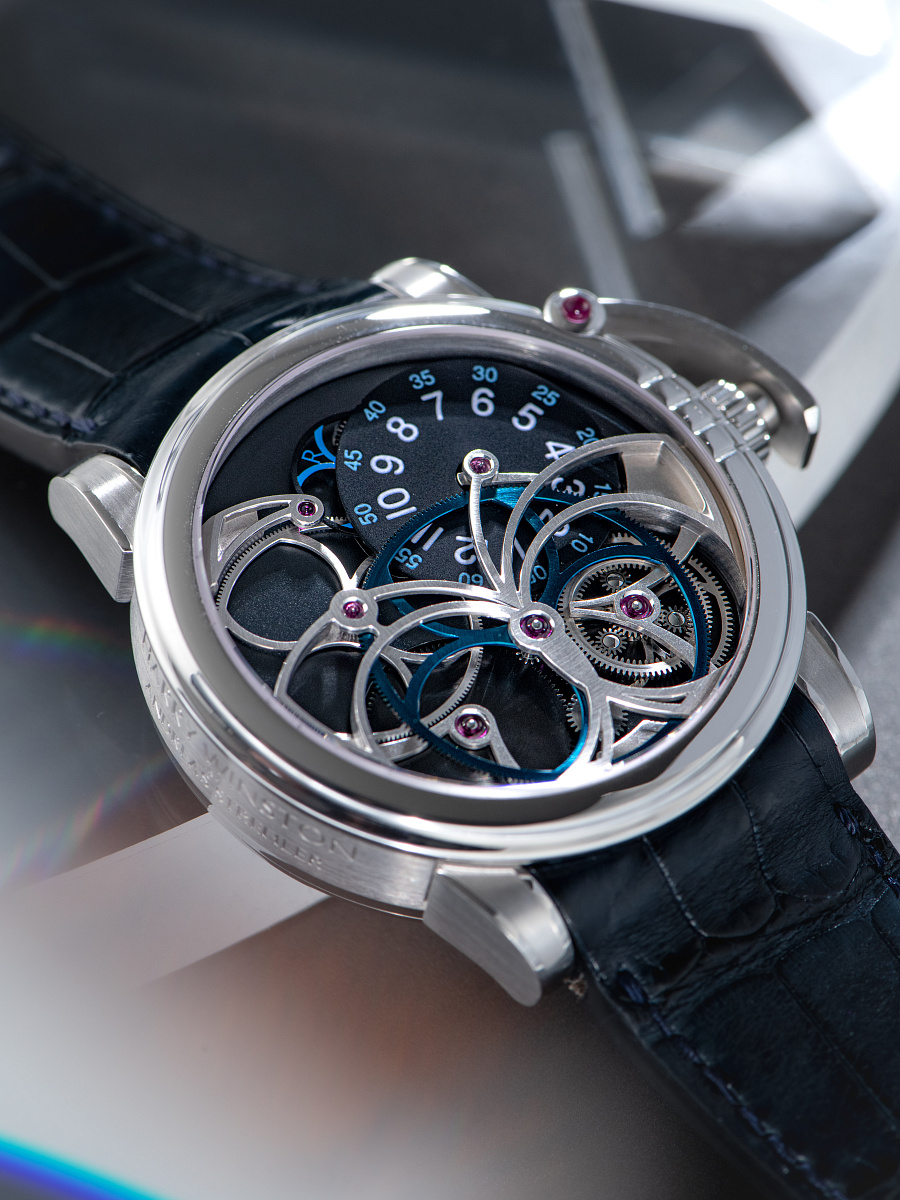
Specifications
| Ref | No. 032097 | |
| D= | 45mm | |
| Glass | Sapphire glass | |
| Dial | skeleton dial | |
| Case material | white gold | |
| Movement | Manual winding |



